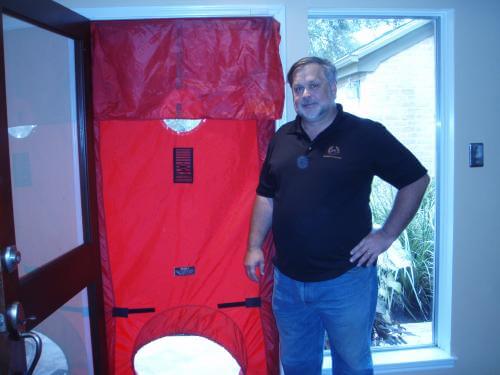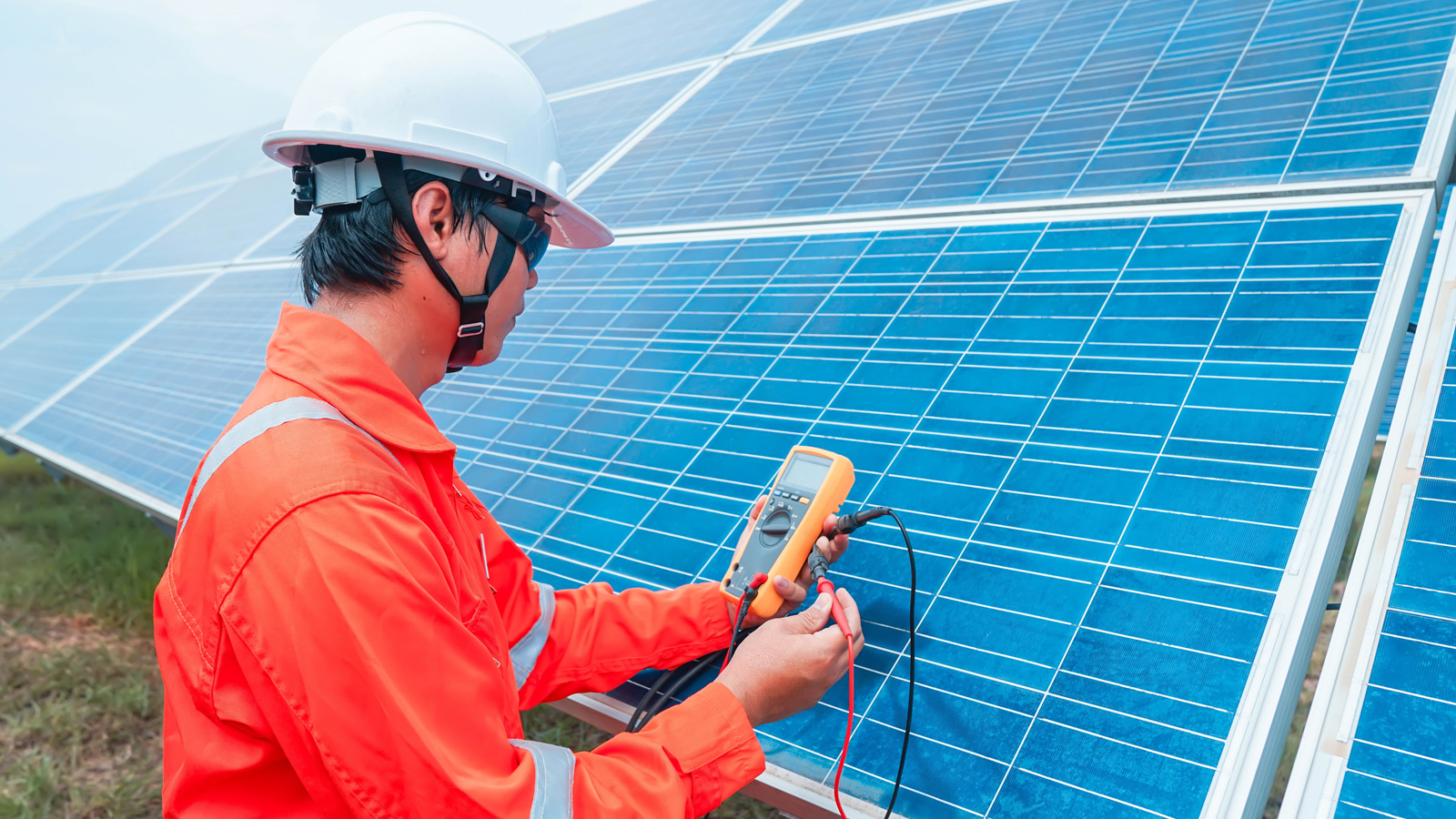5 common problems that energy testing south carolina can uncover—and how to fix them
5 common problems that energy testing south carolina can uncover—and how to fix them
Blog Article
The Role of Power Testing in Achieving an Airtight Service for Your Residential or commercial property
Power screening is vital for home owners looking for to produce an airtight atmosphere. It identifies air leaks and ineffectiveness that can endanger energy efficiency. Common offenders include spaces around windows and doors. Making use of approaches like blower door tests and thermal imaging, homeowners can get insights right into their residential property's vulnerabilities (energy testing north carolina). Understanding these searchings for is crucial. What steps should be taken when air leaks are determined? The solutions hold the key to boosted convenience and cost savings
Understanding Power Testing and Its Relevance
Energy screening plays a necessary duty in assessing the airtightness of structures and structures. By measuring air leakage, this technique gives vital understandings right into a residential property's energy performance, thermal comfort, and overall performance. Airtight buildings decrease energy usage, ensuring that heating and cooling systems run efficiently. This testing process generally involves methods such as blower door examinations, which produce a regulated environment to determine unintended air pathways.Understanding the value of energy testing prolongs past conformity with structure codes; it promotes a proactive strategy to sustainability. Determining air leaks early can result in timely remediation, ultimately enhancing indoor air top quality and decreasing utility costs. Additionally, power testing adds to the longevity of structure products by lessening moisture buildup and relevant damage. As awareness of ecological influence boosts, energy screening comes to be an essential device for building contractors and home owners aiming for high-performance homes.
Common Resources of Air Leaks in Quality
Recognizing typical sources of air leakages is important for improving a property's power effectiveness. These leaks usually take place in numerous areas of a structure, significantly impacting cooling and heating expenses. Common wrongdoers include gaps around doors and windows, where seals may deteriorate with time. In addition, electrical outlets and buttons can create pathways for air exchange otherwise appropriately insulated. Attics and cellars are additionally regular resources, particularly where wall surfaces satisfy the structure or the roof. Other possible leakage factors include plumbing penetrations, venting systems, and the locations bordering smokeshafts. Older homes might suffer from broken down building materials, boosting susceptability to air seepage. By acknowledging these common sources, homeowner can take proactive steps to secure leakages, therefore boosting general power performance and convenience within their rooms. Dealing with these issues is an essential part of establishing an impermeable remedy for any home.
Techniques of Energy Screening: Blower Door and Thermal Imaging
Reliable energy testing approaches, such as blower door examinations and thermal imaging, play an important role in identifying air leaks within a home. The blower door examination involves depressurizing a structure or pressurizing to measure air movement and identify leakages. An adjusted fan is set up in an outside entrance, and the resulting stress distinction highlights locations of undesirable air seepage. This approach quantifies the total airtightness of the structure.Thermal imaging matches blower door tests by aesthetically detecting temperature variants on surface areas, revealing concealed air leaks. Infrared electronic cameras record warm loss or gain, allowing for specific identification of trouble locations, such as poorly protected walls or spaces around doors and windows. energy testing taylors sc. Together, these approaches give a thorough assessment of a residential property's power performance, enabling residential property proprietors to deal with air leakages effectively and improve general performance
Benefits of Identifying Air Leaks
Recognizing air leaks supplies considerable advantages for energy performance and interior comfort. By securing these leaks, structures can lower power intake, leading to lower utility expenses and a minimized carbon footprint. In addition, enhanced airtightness adds to a much more stable indoor setting, boosting general convenience for owners.
Energy Efficiency Improvements
Detecting air leakages is vital for boosting energy performance in buildings. Determining these leaks enables homeowner to address locations where conditioned air escapes or unconditioned air goes into, bring about substantial power savings. By securing spaces and fractures, structures can maintain a consistent temperature level, decreasing the demand on heating and cooling systems. This not just reduces energy bills yet likewise lessens the ecological impact connected with raised energy intake. In addition, power performance improvements add to a building's overall sustainability, making it a much more eye-catching alternative for eco-conscious buyers or renters. Eventually, my sources prioritizing air leakage discovery and removal assists enhance energy usage, advertises accountable source administration, and supports long-term monetary advantages for residential or commercial property proprietors.

Boosted Indoor Convenience
Addressing air leakages not just leads to energy financial savings yet also significantly enhances indoor comfort. When air leaks are effectively recognized and sealed, temperature regulation within a property becomes extra effective. This leads to consistent indoor temperatures, eliminating chilly drafts in winter season and locations in summer season. Enhanced insulation likewise reduces environmental pollution from outdoors, developing a quieter and more relaxed living atmosphere. Additionally, enhanced air top quality is attained by minimizing the seepage of outside toxins, allergens, and humidity, adding to the general well-being of passengers. Subsequently, house owners experience an even more pleasurable ambience, promoting relaxation and productivity. Inevitably, acknowledging and rectifying air leakages is necessary for accomplishing perfect interior convenience throughout the year.
How Power Screening Improves Comfort and Indoor Air High Quality
Power screening plays a necessary function in boosting temperature policy within indoor rooms, guaranteeing a constant and comfortable atmosphere. By sealing and determining air leakages, it also substantially decreases the infiltration of toxins, thus boosting indoor air high quality. This double influence fosters overall well-being for occupants.
Improved Temperature Level Policy
Efficient temperature guideline substantially adds to both comfort and interior air quality, making it an important emphasis for contemporary structure style. Power screening plays an essential duty in attaining this guideline by identifying areas where warmth loss or gain occurs, permitting targeted improvements. By guaranteeing a closed building envelope, power testing assists keep regular interior temperature levels, lowering the demand for extreme home heating or cooling. This stability enhances owner convenience, as fluctuations in temperature level can lead to pain and dissatisfaction. In addition, reliable temperature control can improve indoor air high quality by minimizing the danger of condensation and mold growth, which thrive in uneven temperature level problems. Power testing is essential for enhancing temperature management in business and household properties. Business Lowered Toxin Infiltration
While numerous variables add to indoor air top quality, minimized contaminant seepage stands out as a vital aspect that power screening can substantially boost. Energy testing recognizes air leakages and powerlessness in a structure's envelope, which may enable outdoor toxins, allergens, and moisture to get in interior spaces. By securing these leaks, buildings can successfully limit air-borne pollutants, causing a much healthier environment. Boosted airtightness not only boosts comfort yet likewise minimizes the problem on heating and cooling down systems, resulting in power cost savings. Additionally, minimized pollutant seepage promotes far better general health for residents, as cleaner air promotes respiratory system health and wellness and reduces allergic reaction symptoms. Power screening plays a pivotal function in creating both an energy-efficient and health-conscious living room.
The Financial Effect of Power Screening on Energy Expenses

Actions to Take After Power Screening Outcomes
Once energy testing outcomes are in, home owners must carefully assess the findings to figure out one of the most reliable course onward. The initial step includes recognizing the locations that need renovation, such as air leakages or insulation deficiencies. Homeowners should then prioritize repair work based on the seriousness of the problems and their potential effect on energy efficiency.Next, it is recommended to seek advice from experts who concentrate on power performance to why not try here create a thorough activity plan. This might consist of options like sealing gaps, including insulation, or upgrading windows and doors.After executing the required changes, a follow-up power examination can determine the effectiveness of the fixings. Continual tracking is also essential to ensure that the home preserves its closed standing gradually. By adhering to these actions, property owners can substantially boost their building's energy efficiency, causing minimized utility costs and enhanced comfort.
Often Asked Questions
How Usually Should I Conduct Energy Examining on My Building?
The frequency of energy testing should usually be every couple of years, or following substantial restorations. Normal analyses aid determine efficiency enhancements and assure that the building maintains ideal power efficiency in time, adjusting to transforming conditions.
Is Energy Screening Necessary for New Constructions?
Energy testing is crucial for new constructions, as it recognizes possible air leakage and insulation problems - air tight solutions. Executing these examinations guarantees power effectiveness, boosts indoor comfort, and meets building regulations, inevitably leading to long-lasting like it expense financial savings
Can I Execute Energy Testing Myself?
Energy testing commonly requires specialized equipment and experience. While some homeowners may attempt basic evaluations, expert services ensure exact outcomes and reliable identification of issues, ultimately resulting in better energy effectiveness and comfort in living areas.
What Is the Cost of Professional Energy Testing Providers?
The expense of expert energy testing solutions usually varies from $300 to $1,500, depending upon residential or commercial property dimension, complexity, and location. House owners should consider possible energy cost savings when examining the investment in these solutions.
For How Long Do Energy Screening Results Commonly Last?
Energy screening results normally remain valid for one to 3 years, depending upon variables like structure adjustments and ecological changes. Normal updates are recommended to ensure accuracy and keep effective power performance requirements. Reliable energy screening methods, such as blower door examinations and thermal imaging, play an important duty in diagnosing air leaks within a residential or commercial property. Recognizing these leaks enables property owners to resolve areas where conditioned air leaves or unconditioned air enters, leading to considerable power cost savings. Power testing determines air leakages and weak factors in a structure's envelope, which may allow outside pollutants, allergens, and wetness to get in interior spaces. As house owners significantly seek to decrease their power costs, the function of power screening comes to be essential in determining leakages and inefficiencies. House owners must after that prioritize repair work based on the intensity of the problems and their prospective effect on energy efficiency.Next, it is suggested to consult with professionals that specialize in power performance to design an extensive action plan.
Report this page